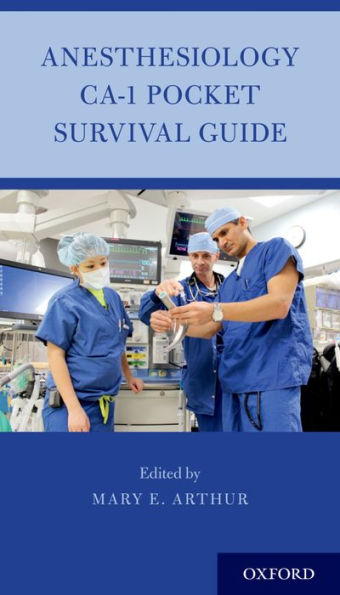Anesthesiology CA-1 Pocket Survival Guide
During the transition from the clinical base year to the first clinical anesthesia year (CA-1), the resident finds himself transforming from a bright and confident intern to an entirely unprepared anesthesiology resident surrounded by unfamiliar equipment and drugs and confronted by patients with acute and dynamically changing physiologies. This book is a concise step-by-step ready reference manual which will help interns to transition smoothly to life in the operating room within the first few months. Anesthesiology CA-1 Pocket Survival Guide will flatten the learning curve and improve the comfort level of trainees entering the OR for the first time. Intended to help provide a smooth transition from intern to resident anesthesiologist, it highlights information to seek out during the orientation period. It provides easy-to-follow instructions for such common tasks as preparing the anesthesia machine, positioning the patient, and entering information into the electronic management system (EMS) and suggests how to obtain and organize a patient's preoperative information to present to the attending anesthesiologist.
"1133095166"
Anesthesiology CA-1 Pocket Survival Guide
During the transition from the clinical base year to the first clinical anesthesia year (CA-1), the resident finds himself transforming from a bright and confident intern to an entirely unprepared anesthesiology resident surrounded by unfamiliar equipment and drugs and confronted by patients with acute and dynamically changing physiologies. This book is a concise step-by-step ready reference manual which will help interns to transition smoothly to life in the operating room within the first few months. Anesthesiology CA-1 Pocket Survival Guide will flatten the learning curve and improve the comfort level of trainees entering the OR for the first time. Intended to help provide a smooth transition from intern to resident anesthesiologist, it highlights information to seek out during the orientation period. It provides easy-to-follow instructions for such common tasks as preparing the anesthesia machine, positioning the patient, and entering information into the electronic management system (EMS) and suggests how to obtain and organize a patient's preoperative information to present to the attending anesthesiologist.
29.99
In Stock
5
1

Anesthesiology CA-1 Pocket Survival Guide
176
Anesthesiology CA-1 Pocket Survival Guide
176
29.99
In Stock

Product Details
| ISBN-13: | 9780190885908 |
|---|---|
| Publisher: | Oxford University Press |
| Publication date: | 07/06/2018 |
| Sold by: | Barnes & Noble |
| Format: | eBook |
| Pages: | 176 |
| File size: | 2 MB |
About the Author
From the B&N Reads Blog
